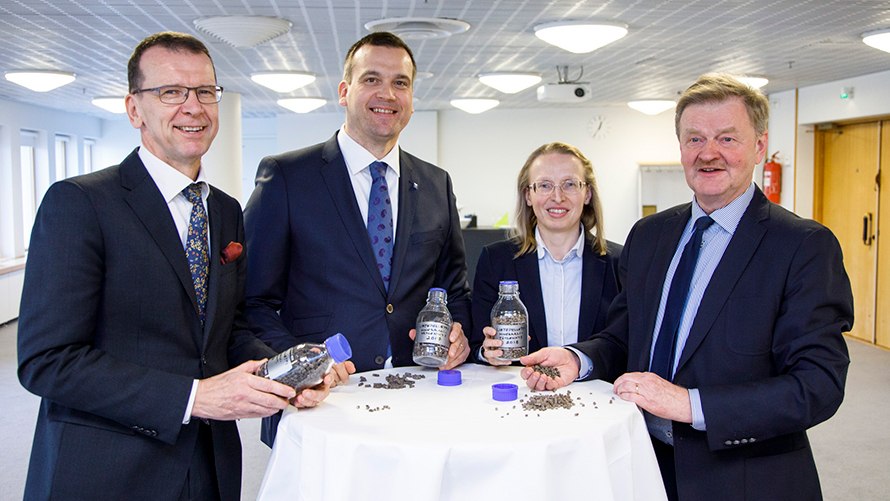“Circular economy and resource efficiency are at the core of UPM’s operations. We are continuously looking for ways to utilise our biomass in the best possible way and create added value from new products produced from sidestreams”, says Esa Laurinsilta, Director of Strategic Partnerships at UPM.
In the research project by UPM and Yara, the sludge originating from paper mills’ production processes is used as raw material for recycled fertiliser. During the production process, the watery sludge is dried and mineral nutrients are added to it.
“By processing the sludge in this way, we want to ensure that the nutrients are in the right form available to plants at the right time. According to our research, a combination of mineral nutrients and nutrients retrieved from sidestreams is more efficient than the nutrients in pure sludge alone”, says Jari Pentinmäki, Director Business Development, Crop Nutrition Europe at Yara.
After drying, the fertiliser is pressed into pellets, which is more convenient for storage, transportation and use on farms.
Promising results
The research and development is carried out at the UPM Research Centre in Lappeenranta and Yara’s Research Centres in Hanninghof, Germany and Yara’s research station in Vihti, Finland.
“The recycled fertiliser has been tested in greenhouses and fields. In wheat farming, the yield using the recycled fertiliser was approximately 20% smaller than that of crops grown with mineral fertiliser. The results are promising, but further research is still needed. We believe we can close the gap by combining recycled fertiliser with modern supplemental fertilising methods”, says Pentinmäki.
Recycled nutrients must fulfil agricultural requirements for both yield and quality. “It is important for us to ensure that the fertilisers used in the fields meet the strict requirements for food safety and are environmentally sustainable. If the fertiliser’s efficiency is low, there’s a risk for nutrient run off into waterways. — contradicting the circular economy principles.”
Recycled nutrients are an important part of future nutrient solutions. “Due to rapid population growth, the significance of efficient use of natural resources is further emphasised. We are moving from a linear economic model to a circular economy where nutrients that have gone through the value chain are used again to fertilise crops”, he adds.
“Forest industry sidestreams are substantial, so our partner should also be a prominent operator in their field. In this project, we especially require Yara’s knowledge of plants and fertilisers, but we are equal partners in the sense that both companies are looking for solutions for large volumes”, says Laurinsilta.
 Esa Laurinsilta (UPM), Jari Pentinmäki (Yara), Katja Viitikko (UPM), and Raimo Kauppila (Yara)
Esa Laurinsilta (UPM), Jari Pentinmäki (Yara), Katja Viitikko (UPM), and Raimo Kauppila (Yara)
Exemplary partnerships
UPM’s and Yara’s research project is part of Raki2, a nutrient recycling programme by the Finnish Ministry of the Environment. The project has been granted funding until the end of 2018.
The project contributes to Finland’s strong role as a model state of bioeconomy, circular economy and resource efficiency. Raki2 is one of the Finnish government's key projects.
"The government aims to develop internationally competitive circular economy solutions, add significant value to our products and create new jobs. In a circular economy, efficient use of resources is key, and in this field there is still much work to be done”, states Jari Leppä, Minister of Agriculture.
Raki2 is also a good platform for joint projects from an industrial viewpoint. The project has shown that high-quality research is needed in both raw material processing and manufacturing as well as in the cultivation of crops.
“The programme creates a strong framework for co-operation and reduces the time it takes to implement projects. The ultimate goal for nutrient recycling is to improve environmental status and restore the condition of the Baltic Sea”, says Laurinsilta.
“Our project is a good example of a circular economy initiative that combines the knowledge from different industries within a framework provided by the public sector. UPM also utilises the project’s findings in its ‘Zero Solid Waste to Landfill’ initiative. Responsibility is good business”, he concludes.
Vesa Puoskari
